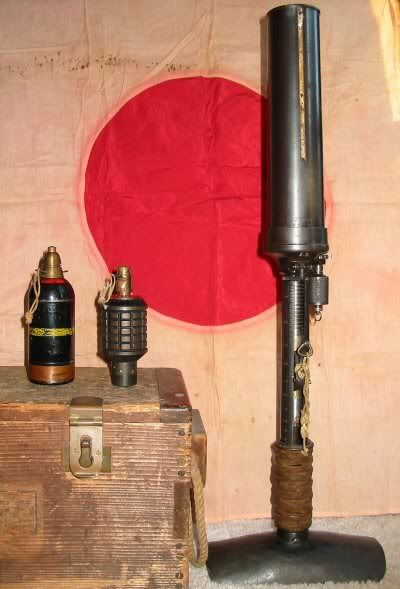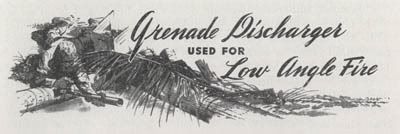Page 1 of 1
Type 89 "Knee" mortar
Posted: Fri May 26, 2006 2:27 pm
by jdeleur
I have understand that there were 3 different models.
Can anyone tell me de differences between them and the time frame they were made?
Posted: Fri May 26, 2006 2:58 pm
by Tanaka
i know there was the model 10 and the model 89.
The model 10 was a smooth bore weapon so it was primarily used to fire flares and the model 89 is the common knee mortar as it was used to fire high explosive, smoke, pyrotechnic signals and incendiary shells.
i'll see if i can find a third version
Posted: Fri May 26, 2006 8:55 pm
by jdeleur
I only mean the three variations of the type 89.
The Type 10 is a seperate one.
I know the first variation was introduced about 1932 and they were produced till 1945.
Posted: Fri May 26, 2006 9:09 pm
by Tanaka
as far as i was aware the type 89 was introduced in 1929 and i haven't been able to find any information about the variations in it
Posted: Fri May 26, 2006 9:24 pm
by jdeleur
This is some further info about the Knee mortar.
These are the different sight line colors observed.
1.Thin Red Line with “Leveling Device”
2.Thin White Line
3.Wide White Line
Here one with the white line:

Also have a picture with the thin redline and "leveling device"
Just have to search through my files.
Posted: Fri May 26, 2006 9:33 pm
by jdeleur
Here's the one with the red line.
You can clearly see the rifling of the barrel.

Posted: Fri May 26, 2006 9:38 pm
by Tanaka
cheers for that, i knew they had the white line for aiming, didn't know some had a red line or a wider white line.
is there any specific reason for the different lines?
Posted: Fri May 26, 2006 9:46 pm
by jdeleur
I think these lines go with different production models in different time periods.
But it's just a guess.
Do you have info on production figures?
Posted: Fri May 26, 2006 9:52 pm
by Tanaka
i did read somewhere that the Japanese made about 120 000 in total, how many of each i couldn't tell you.
i can tell you why its called the type 89 because it was introductuced in the Japanese year 2589, i.e. 1929.
Posted: Fri May 26, 2006 10:00 pm
by jdeleur
That's correct.
You can see some "knobs" on the red lined barrel.
These knobs aren't on the white lined version.
Posted: Sat Jun 10, 2006 11:58 pm
by jdeleur
Some info that i found in Tactical and Technical Trends, No. 51, October 1944
A WWII U.S. intelligence report on the Japanese use of the Model 89 grenade discharger
GRENADE DISCHARGER USED FOR LOW-ANGLE FIRE
--------------------------------------------------------------------------------

Japanese use of the Model 89 grenade discharger as a low-angle direct-fire weapon has been definitely indicated, according to recent reports. To use the weapon in this manner, the piece must be emplaced at an angle about 15° from the horizontal. With the Model 89 shell, direct laying at ranges of 50 to 100 vards has been reported as effective. However, this shell has a contact fuze, and premature explosions will occur if trees or other obstructions are in the line of fire.
The fragmentation hand grenade Model 91, adapted for use in the discharger, can also be used for direct fire at ranges up to 60 yards. Principal advantage of the hand grenade is its time fuze (6 to 7 seconds) which will not detonate if it passes through light obstructions, thus allowing its use from behind foliage.
For maintaining an angle of 45° in firing the discharger, the attachment described below is used.
This consists of a small drum, approximately 1.15 inches in diameter, mounted of a circular clamp which fits around the base of the barrel. The attachment is oriented by means of a red sighting line on the back of the clamp, which should be aligned with the sighting line on the barrel.
The drum has a small transparent window on the lower rear side, a red line in the center of the window. When the grenade discharger is held so that a luminous line inside the drum is aligned with the red line on the window, the axis of the bore forms an angle of approximately 45° with the horizontal.


